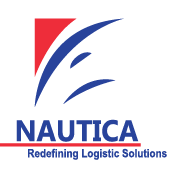-
- 10 Nov
International Transportation and Logistics Then and Now
E-commerce has become a multi billion dollar industry, it is valued at a whopping $1.5 trillion globally, and it is expected to grow 20% in the next 12 months. This radical growth is due to the evolving technology, and the changes in consumer behaviour. And the latest evolution has been the birth of m-commerce.
Having an online presence has made the life of customers easier, where they can compare product prices, features, performances, read reviews, read comments made by other users, and assess functionalities. While the convenience for customers has increased, it has created an added burden for the providers, as the products that are being ordered online need to be delivered in a timely manner to the respective person. Rather than a mere online presence it has also enabled the growth of global online businesses such as eBay and Amazon.
In a recent study it was found that 71% of shoppers prefer to shop online as they feel that they get a better deal when they shop online. This is in direct contrast to the belief some time back where shoppers wanted to do every purchase by physically being present at the store. The growth has been infectious in the last 12 months. Compared to the first quarter of 2013, the sales in the first quarter of 2014 have shown a 13% growth in ecommerce, and a 35% growth in m-commerce. Another encouraging development is the fact that Generation X has adopted online shopping more than Generation Y, where there spend on average $561 against $489, and the decision making time is around 16 minutes (after a product comparing period of 30 minutes).
So, what are the challenges this market is facing? With the ever growing market and demand the greatest of challenges is how these orders can be fulfilled in a timely manner? This is where the global logistics businesses have come in as the saviour. Handling their own delivery is not an option any business will take up these days, as it brings in a lot of costs and operational difficulties, and with this in mind most businesses have started outsourcing or partnering with trusted logistics providers.
Certain logistics providers have moved up the supply chain to provide warehouse facilities, special transport conditions (temperature control, environmental friendly practices, eco friendly options, etc.), and adopting service quality standards. These have been a giant leap from a couple decades back where the logistics / delivery were done by the organisations themselves.
It is important to consider the order fulfilment as the most important objective, as successful order fulfilment will boost your brand image and goodwill, and finding the best logistics provider who satisfies all your requirements is key for your business success.

